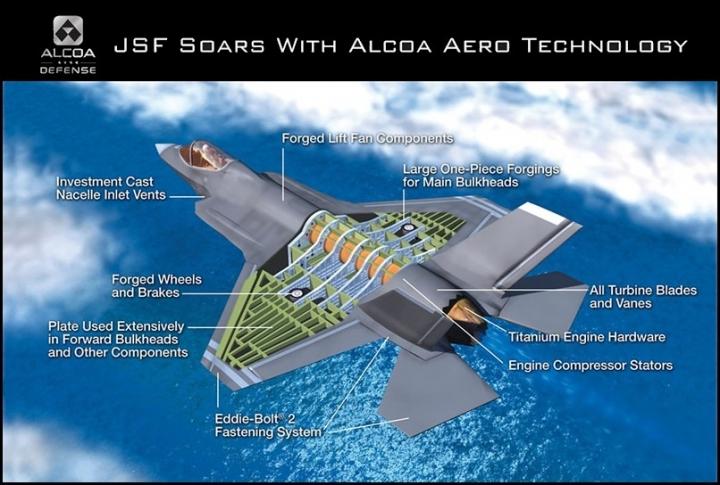Lockheed Martin (LMT) leads the team developing and producing the F-35 Joint Strike Fighter (JSF). The Obama Administration has placed its hopes on this aircraft to modernize the U.S. fighter fleet.
The decision to cancel the F-22 means that the F-35 will be responsible for replacing the majority of the aging F-15, F-16 and F-18 aircraft in use by the U.S. Air Force, Navy and Marine Corps.The Defense Department obviously has concerns that the program may struggle to meet its new cost and schedule goals. The JSF like all systems and acquisition programs of its size and complexity has had issues with schedule and cost growth. If there is serious cost increases it will affect the whole viability of the program as that would reduce the number built each year stretching out the program and making it even more expensive. The Government is reviewing plans and how to constrain growth.To help cushion the end of F-22 production Secretary Robert Gates went ahead and accelerated some production in 2010 to aid testing and development. Lockheed must be able to meet these goals and then the large quantities of aircraft that will be built once steady state production starts. In order to do this it will need to be able to buy parts and assemblies from a host of suppliers across the world. Because the F-35 relied on foreign partners for investment in its development companies in these countries have been given some of the manufacturing work.
Alcoa Inc. (AA) is one the companies that will provide aluminum alloy bulkheads used to assemble the aircraft's fuselage. These are large, complex shapes that must be made through the use of a press. In 2007 Lockheed subcontracted to Alcoa for these parts some of which are up to twenty-three feet long. In order to meet the new accelerated production goals of the program Alcoa is investing its own money in refurbishing its twenty-five ton press which will aid in making these assemblies.This one year, $110 million project will be critical to both Alcoa and Lockheed to support the new schedule. Of interest this press was actually one of two built by the U.S. Government in the Fifties to support its domestic aviation industry. It has actually been named a historical landmark by the American Society of Mechanical Engineers (ASME). This means that America's most technically advanced aircraft will be made by equipment that is over fifty years old and is considered a historical landmark. Of further interest it is based on a German designed one from World War II.This illustrates that the U.S. and many other countries would have a hard time increasing production of such items due to limits on key industrial capability. The ability to quickly build something like this press would be hard. It is in some ways a testament to modern industrial engineering that this piece of equipment still exists and is available for this program. It also illustrates that without this kind of investment it will be hard to increase JSF production rates.


